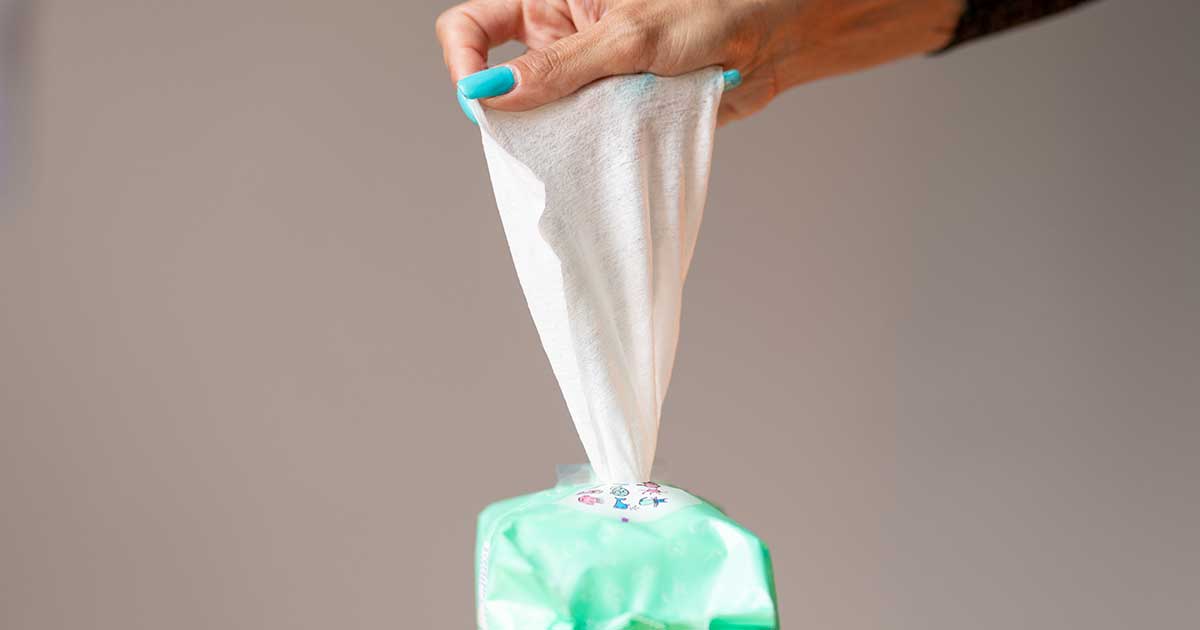True Cellular Formulas Team - March 12, 2024
The Hidden Risks of Disinfectant Wipes
Beyond Convenience Lies Cause for Concern

In the quest for cleanliness and germ-free surfaces, disinfectant wipes have become a ubiquitous household item. Brands like Clorox and Lysol have positioned their wipes as convenient solutions for keeping our homes sanitized. However, what many consumers may not realize is that these seemingly innocuous wipes harbor hidden risks. Today, we're peeling back the label to reveal the concerning truth behind these popular cleaning products.
Understanding the Composition of Disinfectant Wipes
Disinfectant wipes boast of their ability to kill germs and bacteria on surfaces, but what exactly are they made of? A closer look at their ingredients reveals the presence of quaternary ammonium compounds, commonly known as 'QUATs'. These chemicals serve as the active agents responsible for disinfecting surfaces. However, recent research has shed light on the potential health implications of QUATs, raising important questions about the safety of these products for everyday use.
The Health Implications of QUATs
Studies have shown that QUATs can pose significant risks to human health. One of the most concerning findings is their potential impact on respiratory health. Inhalation of QUATs, whether through direct exposure during cleaning or through secondary exposure from contaminated air, has been linked to respiratory irritation and even asthma exacerbation.[1]
Moreover, QUATs have been found to disrupt hormone function in the body.[1-2] This is particularly alarming given the role hormones play in regulating various bodily processes. Disruption of hormone balance can have far-reaching consequences, affecting everything from reproductive health to immune function.
As consumers, it's crucial to be aware of these potential health risks and to make informed choices about the products we use in our homes. While the convenience of disinfectant wipes may be tempting, the health implications of their chemical composition cannot be ignored.
Secondary Exposure Concerns
What's perhaps even more concerning is the potential for secondary exposure to QUATs. Research has revealed that these chemicals can linger in the environment long after their initial use, contaminating indoor air and surfaces. In fact, QUATs have been detected in household dust, indicating that they may pose a continuous exposure risk to occupants of treated spaces.[3]
Of particular concern is the detection of QUATs in human fluids such as breast milk.[4] This raises serious questions about the potential impact of these chemicals on vulnerable populations, including infants and young children. Given their still-developing bodies and heightened sensitivity to environmental toxins, children may be especially susceptible to the adverse effects of QUAT exposure.[5]
These findings underscore the importance of exercising caution when using disinfectant wipes in the home. While they may effectively eliminate germs on surfaces, the potential health risks associated with QUATs warrant careful consideration.
Safer Alternatives for Disinfection
Fortunately, there are safer alternatives available for disinfecting surfaces without exposing ourselves and our loved ones to harmful chemicals. One of the most effective alternatives is the classic combination of soap and water. This simple yet powerful duo is not only gentle on surfaces but also highly effective at removing dirt, grime, and germs.
For those seeking additional disinfection power, white vinegar can be a natural and eco-friendly solution. Vinegar possesses antimicrobial properties that can help kill certain types of bacteria and viruses without the need for harsh chemicals.[6] Simply dilute white vinegar with water and use it as a spray or wipe to disinfect surfaces throughout your home.
By opting for these safer alternatives, you can maintain a clean and healthy living environment without compromising on your well-being or the well-being of those around you.
Summary
The convenience of disinfectant wipes may come at a hidden cost to our health. The presence of quaternary ammonium compounds (QUATs) in these products poses risks to respiratory health and hormone function, with potential implications for individuals of all ages.
As consumers, it's essential to prioritize our health and safety by making informed choices about the products we use in our homes. By opting for safer alternatives such as soap and water or white vinegar, we can effectively disinfect surfaces while minimizing our exposure to harmful chemicals.
Together, let's take proactive steps to create a clean and healthy living environment for ourselves and our loved ones, free from the hidden risks of toxic disinfectant wipes.
- Mohapatra, Sanjeeb et al. “Quaternary ammonium compounds of emerging concern: Classification, occurrence, fate, toxicity and antimicrobial resistance.” Journal of hazardous materials vol. 445 (2023): 130393. doi:10.1016/j.jhazmat.2022.130393
- Datta, Sandipan et al. “In Vitro Evaluation of Mitochondrial Function and Estrogen Signaling in Cell Lines Exposed to the Antiseptic Cetylpyridinium Chloride.” Environmental health perspectives vol. 125,8 087015. 22 Aug. 2017, doi:10.1289/EHP1404c
- Frantz, Aubrey L.. “Chronic quaternary ammonium compound exposure during the COVID-19 pandemic and the impact on human health.” Toxicology and Environmental Health Sciences, 1–8. 9 Jun. 2023, doi:10.1007/s13530-023-00173
- Zheng, Guomao et al. “The first detection of quaternary ammonium compounds in breast milk: Implications for early-life exposure.” Journal of exposure science & environmental epidemiology vol. 32,5 (2022): 682-688. doi:10.1038/s41370-022-00439-4
- Carroquino, Maria J. et al. “Environmental Toxicology: Children at Risk.” Environmental Toxicology: Selected Entries from the Encyclopedia of Sustainability Science and Technology 239–291. 4 Dec. 2012, doi:10.1007/978-1-4614-5764-0_11
- Zinn, Marc-Kevin, and Dirk Bockmühl. “Did granny know best? Evaluating the antibacterial, antifungal and antiviral efficacy of acetic acid for home care procedures.” BMC microbiology vol. 20,1 265. 26 Aug. 2020, doi:10.1186/s12866-020-01948-8



